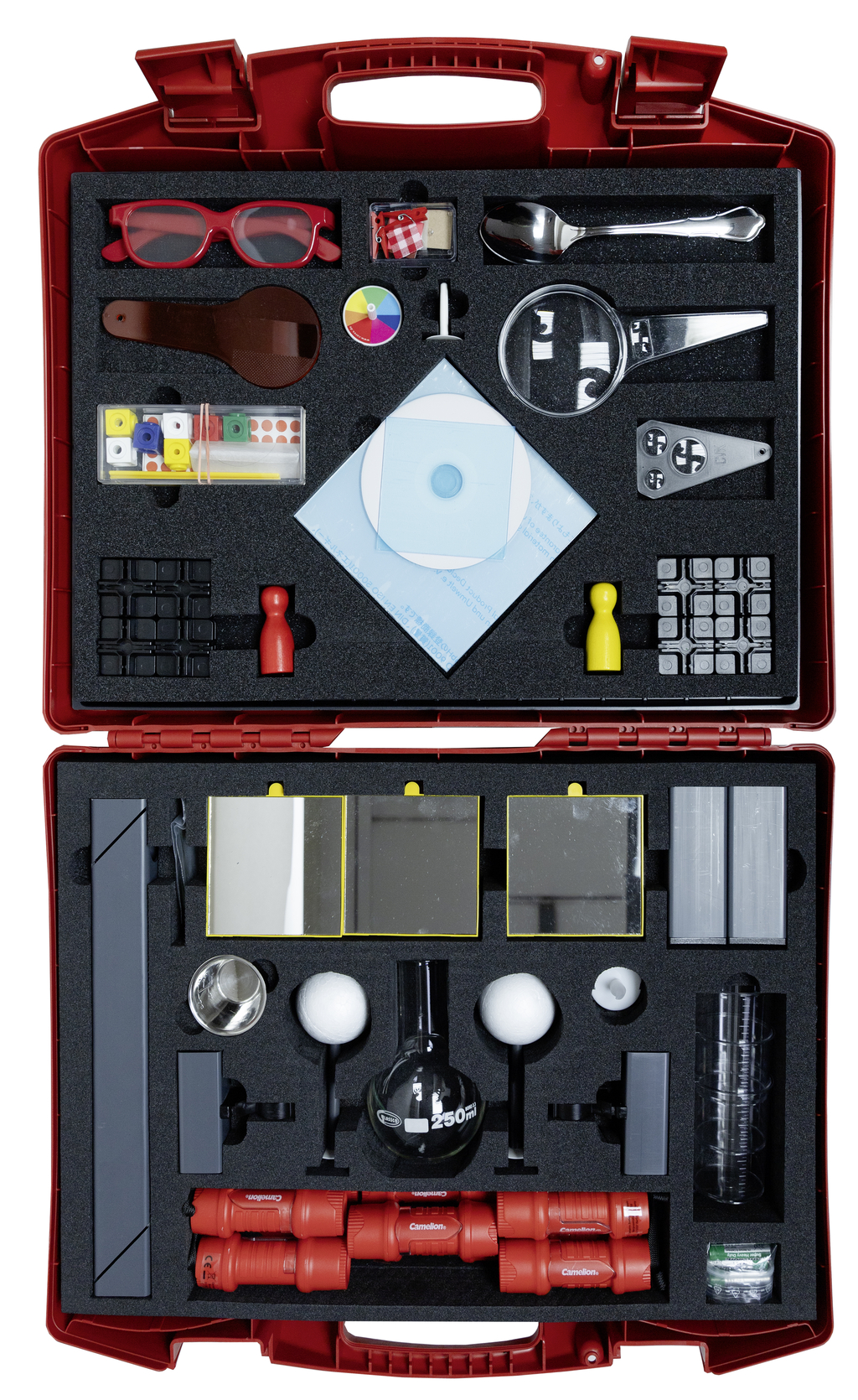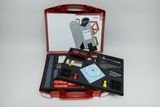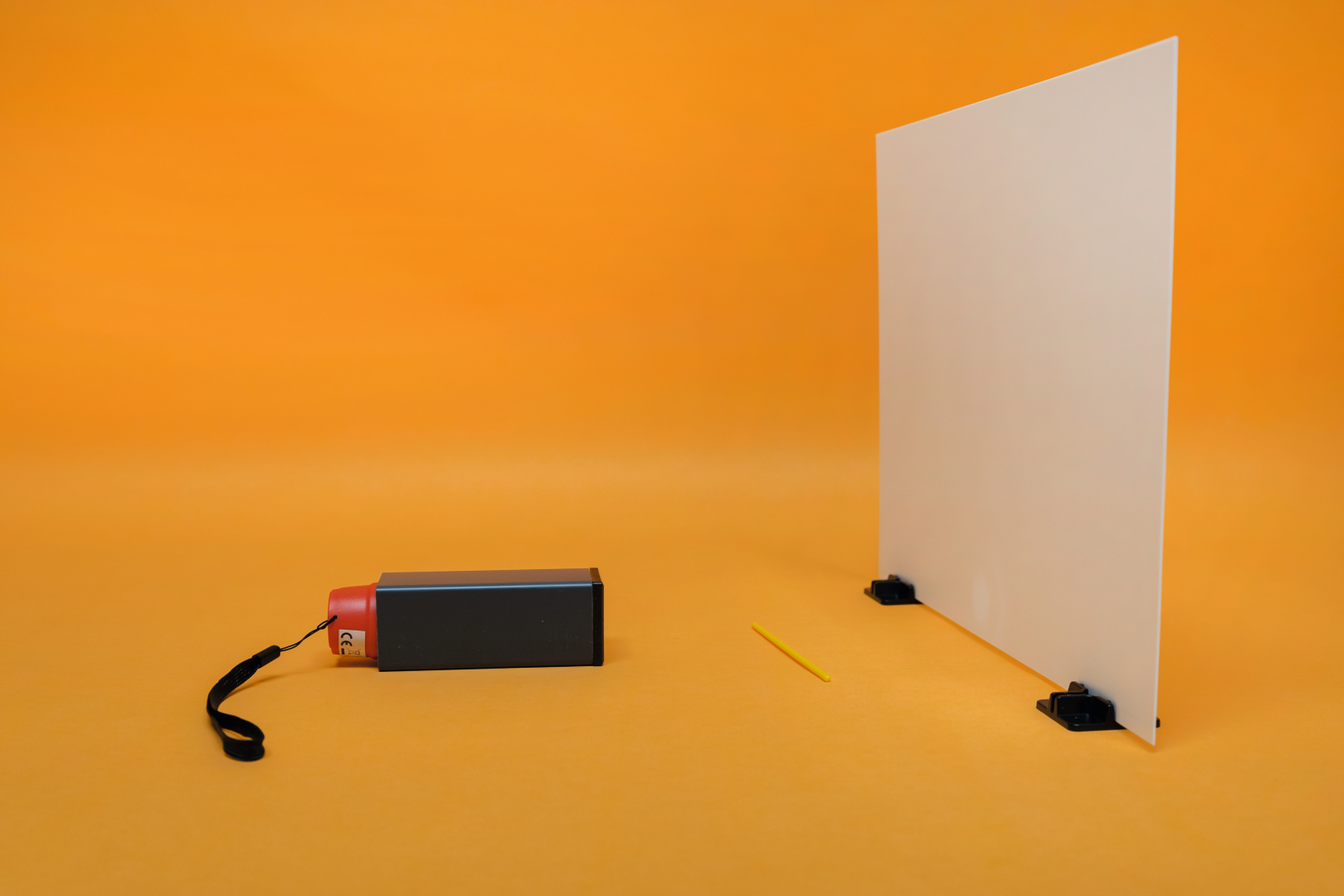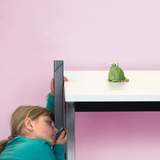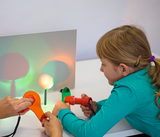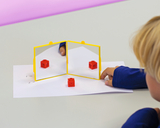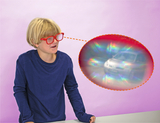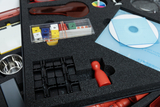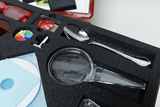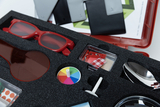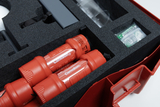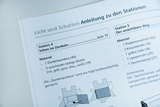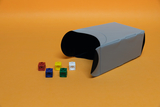Students kit Primary Optics
Can light go around the corner? Are there coloured shadows? Why is it dark at night?
Light and shadow, colour and reflection are optical phenomenons, that fascinate children. Experiments will help them to understand the natural scientific facts behind the phenomenon.
The field of vision, the structure of the human eye and other secrets become comprehensible.
All experiments tie in with the experiences of the children. In a playful way they will find out the laws of reflection, the composition of light and optical illusions. Playing with shadows will lead to surprising discoveries.
Age 6-9
Materials for up to 22 workstations (for 22 children at least)
What does a convex mirror do? The children get to the bottom of this question with a tilting mirror and a spoon.
We will shortly provide you with a description of the experiment at this point.
What color(s) are shadows ? Most children will say "gray" or "black". The attempt at the "colored shadows" focuses on a phenomenon that can be observed in particular at events that include colored spotlights.
We will shortly provide you with a description of the experiment at this point.
We will shortly provide you with a description of the experiment at this point.
We will shortly provide you with a description of the experiment at this point.
In pairs, the children develop an idea of the structure and the processes in the eye.
The children engage in research with an optical device they are familiar with, the magnifying glass. You will find out how the image changes with the distance from the object and how the magnifying glasses differ in the magnifying power.
We will shortly provide you with a description of the experiment at this point.
The children set up a dark room box and find out which objects are visible and which are not.
We will shortly provide you with a description of the experiment at this point.
The children learn from the six different examples of optical illusions that deceptions can definitely occur when looking.
We will shortly provide you with a description of the experiment at this point.
The children use two mirrors and a cube to investigate how often the cube can be reflected.
The depth of the mirror world can be experienced particularly impressively with this experiment.
The children use bendable mirrors to investigate the deformation of the reflected image.
The worksheet guides the children to a series of experiments. By drawing their observations on the sheet, they learn a simple, systematic approach. In the end, it allows statements to be made about how shadows differ and what the prerequisites for this are.
We will shortly provide you with a description of the experiment at this point.
With a flashlight, the children can form shadows that interact with each other.
We will shortly provide you with a description of the experiment at this point.
- 1 × Big magnifier with three lenses, 100 mm
- 1 × CD
- 2 × Styrofoam ball 60 mm Ø with bore
- 1 × Set 5 small cubes
- 1 × Screen, transparent, 150x150 mm
- 1 × Coloured paddle, red
- 1 × Coloured paddle, green
- 2 × Plastic-mirror, flexible 150x150 mm
- 1 × Plastic box, 140x50x25mm
- 1 × Prism, equilateral, 25x75 mm
- 1 × Plastic case ca.540x450x150 mm
- 1 × Tray 510x360x20 mm
- 1 × Storing diagram,int.vers.
- 1 × Foam insert 2 for 31749
- 1 × Foam insert 1 for 31749
- 7 × Cover for felt paper
- 1 × Triple lens magnifier
- 1 × Metal crucible 50mmØ
- 15 × Strips with 22 adhesive dots, red
- 2 × Insertion mirror
- 1 × Large token, red
- 1 × Large token, yellow
- 1 × °Mini-darkroom
- 1 × Multispectral googles
- 1 × Material samples in a small box
- 2 × Shadow rod, 100 mm
- 1 × Shadow rod
- 2 × Torch stand
- 2 × Torch tube
- 11 × Torch
- 1 × Periscope
- 1 × Newton gyroscope
- 1 × Screen translucent, plastic 90x90x1 mm
- 16 × Cross base
- 5 × Tilting mirror
- 1 × Metal spoon, polished (205/40 mm)
- 1 × Tealight, electrical
- 3 × Beaker, plastic, 100 ml (graduated)
- 2 ×
- 1 ×
- 1 ×
- 4 ×
- 1 ×
- 1 ×
- 1 ×
